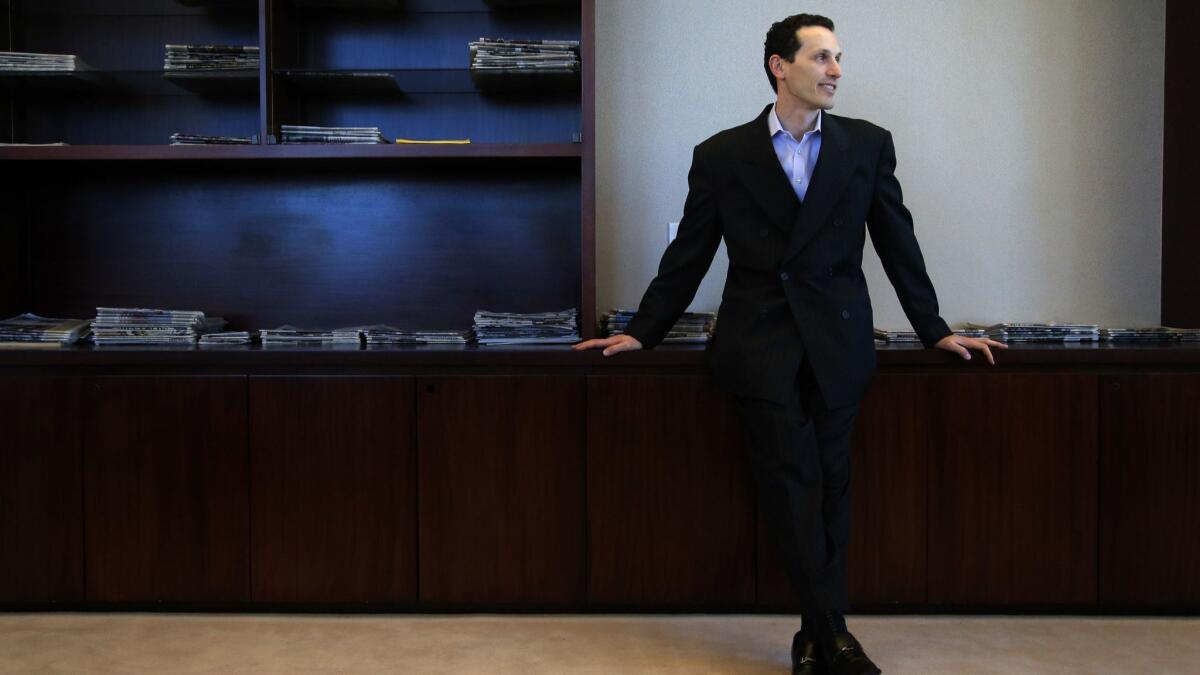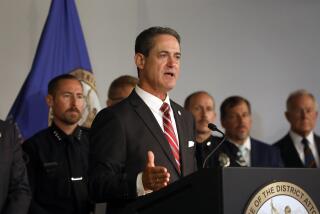Column: Feds say the O.C. Register’s ghoulish purchase of life insurance on its employees cost it millions

- Share via
Facing a severe financial crunch back in 2013 and 2014, the then-owners of the Orange County Register cooked up a creepy plan to dig out of their hole: They bought life insurance policies on their own employees.
The idea was to record the putative value of those policies upon the workers’ deaths as a contribution to the newspaper’s pension fund, which was in the red by hundreds of millions of dollars.
We called this plan “ghoulish” when word leaked out in 2014. But the Pension Benefit Guaranty Corp., a federal agency that now operates the pension fund as its trustee, says it was worse than that. In a lawsuit filed on Valentine’s Day, the PBGC says the stunt was incompetently arranged, and a violation of the company’s fiduciary duties to its own workers.
Life insurance, by its very nature, was created to benefit the people we love and care about most.
— Aaron Kushner, 2014
Counting the money invested and the inflated fees the company paid to the pension “expert” who pitched the arrangement, the government says, the company lost $9.4 million on the scheme. The PBGC wants the money back from the Register’s owners at the time, Aaron Kushner and Eric Spitz, as well as Richard Covelli, the pension expert, and Covelli’s actuary.
That’s just part of the improper actions Kushner and Spitz took with the pension fund, the PBGC asserts. They also invested pension money in the Register’s parent, Freedom Communications, when they knew the company was failing; in an international hedge fund that has since failed; and in a portfolio of loans to finance life insurance policies for strangers, the agency says.
The Freedom and hedge fund investments are now worthless and the pension fund incurred losses on the others. The PBGC wants Kushner, Spitz and the other defendants to make good on all the damage, which it calculates at $54.65 million.
Kushner and Covelli couldn’t be reached for comment. Covelli’s actuary, Traci M. Christian, did not respond to a call made to her Kansas office. Spitz didn’t reply to messages left at his home in Newport Beach or at C4 Distro & Trading, the cannabis firm he founded in 2016 with former California Treasurer and Atty. Gen. Bill Lockyer.
All these schemes took place when Freedom was between bankruptcies. Kushner, a former greeting card executive, and Spitz bought Freedom in 2012, two years after it emerged from Chapter 11. They launched an ambitious program to build up the print circulation of the Register and its sister publication in Southern California, the Riverside Press-Enterprise, hiring more than 100 reporters and editors. But by January 2014 they acknowledged that the strategy had failed, and laid off staff by the dozens.
They both resigned from Freedom in March 2015, and the company reentered bankruptcy later that year. The pension fund was turned over to the PBGC, which takes over deeply impaired corporate pension funds, after the bankruptcy filing.
Freedom subsequently sold the Register and Press-Enterprise to Digital First Media. That chain is owned by the hedge fund Alden Global Capital, which has pursued a policy of cutting staff to the bone and pocketing revenue from the spavined remainder.
A few days after the Kushner regime announced the 2014 layoffs, many of the remaining employees got emails informing them that the company wished to buy life insurance on them.
The direct beneficiaries of these million-dollar-plus policies wouldn’t be the employees or their families, but the pension plan.
We called this a “ghoulish corporate strategy” in our first report on the scheme. Kushner hadn’t responded to our questions about it, but then told employees that our post was “a reminder of the kind of newspaper and journalism of which we want no part.” He said, “Life insurance is not ghoulish, nor are the people who sell it, nor are those who buy it. Life insurance, by its very nature, was created to benefit the people we love and care about most.”
Well, yes and no. As I reported at the time, the insurance Kushner was proposing is not illegal. It’s known formally as COLI, for “company owned life insurance,” and less politely as “dead peasant” insurance. That’s a reference to Nikolai Gogol’s classic comic novel “Dead Souls,” which is about a con man who crisscrosses czarist Russia buying up dead serfs as collateral for a business deal.
Millions of employees of major firms may be covered today by dead peasant policies. The law requires companies proposing to take them out on rank-and-file employees to get the workers’ advance written consent, which the Register aimed to do via its email.
According to the PBGC, however, the Kushner, Spitz and Covelli scheme broke other rules. It’s unclear how many policies the pension fund bought, or the timing, but the PBGC says the pension fund spent $9.4 million to buy the life insurance, paying Covelli and his associates inflated fees and commissions.
The biggest problem was that they valued the policies at the net present value of the future death benefits. That’s improper, the PBGC says; accounting rules say the policies had to be valued at their cash surrender value, a much lower figure. Kushner and Spitz knew about this flaw, the PBGC alleges, because the pension fund’s fiduciary advisor, Aon Hewitt, and the fund’s accounting firm told them so.
Contrary to Kushner’s claim to the workers that the insurance scheme was designed to benefit them and their families by strengthening the pension fund, the federal agency says the deal was designed to benefit Kushner and Spitz, by reducing the amount they had to pay into the pension fund to cover its shortfall. But according to the lawsuit, the real valuation was so low in relation to the cost of the insurance that the deal would increase the amount they owed to the fund.
Once Kushner and Spitz realized that their valuation was faulty, the PBGC says, they abandoned the life insurance plan. In any case, the agency says, the insurance “was not a suitable asset for the pension plan to acquire.”
The PBGC isn’t happier with the other investments it attributes to Kushner and Spitz. These include $7.25 million they had the fund invest in shares of 2100 Freedom, the corporate entity they had created to hold Freedom Communications, when they knew Freedom was “in financial distress,” the PBGC says. Those shares are now worthless.
Then there’s a $6-million investment in a Luxembourg hedge fund known as Topaz, an investment the PBGC says was in the red from Day 1. Topaz eventually was subjected to liquidation proceedings in Italy. The investment is now worthless, the PBGC says.
Finally, there was a $32-million investment in a loan scheme to a welter of life insurance trusts. This also was a brainchild of Covelli, the PBGC says, adding that the investment cost more than the fair market value of the loans.
Keep up to date with Michael Hiltzik. Follow @hiltzikm on Twitter, see his Facebook page, or email [email protected].
Return to Michael Hiltzik’s blog.
More to Read
Inside the business of entertainment
The Wide Shot brings you news, analysis and insights on everything from streaming wars to production — and what it all means for the future.
You may occasionally receive promotional content from the Los Angeles Times.











